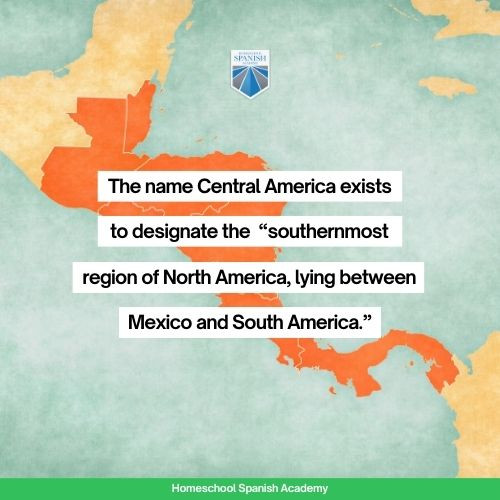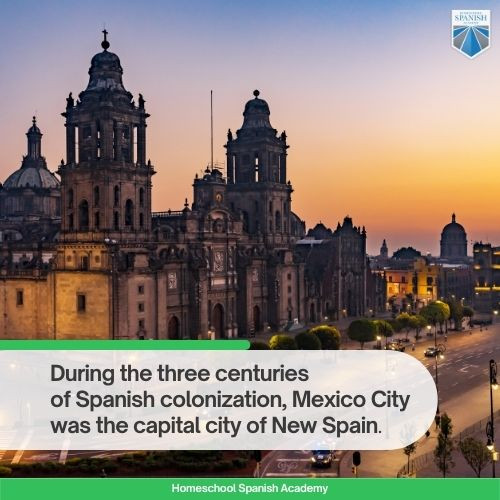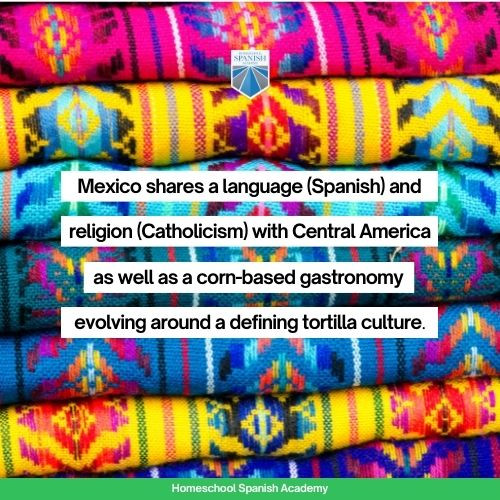Is Mexico part of North America, Central America, or both? At gaymexico.net, we understand that exploring Mexico’s identity can be complex, especially for LGBTQ+ travelers and those interested in Mexican culture. We’re here to provide clarity, offering insights into Mexico’s geography, culture, and its unique place in the Americas, ensuring you have the information you need for a safe and enriching experience. This involves examining historical connections and current geopolitical factors, providing a comprehensive overview to enhance your understanding of this diverse nation.
1. Understanding Mexico’s Geographic and Cultural Position
Mexico boasts a captivating history, a vibrant culture blending diverse elements, and a unique geographic location. The question of whether Mexico is in Central America isn’t straightforward. Let’s clarify Mexico’s geographic and cultural position to understand its place in North or Central America.
2. Defining a Continent: What Does It Really Mean?
According to National Geographic, a continent is one of Earth’s seven main divisions of land. These divisions are Africa, Antarctica, Asia, Australia, Europe, North America, and South America.
Keep this definition in mind as we discuss the continents in the Western Hemisphere.
 The seven continents of the world, including North America, South America, and others
The seven continents of the world, including North America, South America, and others
2.1 What Defines North America?
The Britannica Encyclopedia states that North America is the third-largest continent, stretching from Alaska and Greenland down to the Isthmus of Panama.
North America includes Canada, the United States, Mexico, Guatemala, Belize, Honduras, El Salvador, Nicaragua, Costa Rica, Panama, and the Caribbean countries. However, some geographers believe the continent ends at the Isthmus of Tehuantepec in southern Mexico. This perspective suggests that Mexico could be included in Central America, a region with shared history and cultural elements.
2.2 What About South America?
South America, while not the main focus, provides context. According to Britannica, it’s the fourth-largest continent, extending from Colombia to Cape Horn in Chile.
South America includes Argentina, Bolivia, Brazil, Chile, Colombia, Ecuador, Guyana, Paraguay, Peru, Suriname, Uruguay, and Venezuela. Some sources include French Guiana and the Falkland Islands, but these are overseas territories of France and the UK, respectively.
2.3 Is Central America a Continent?
Central America is not a continent but rather the southernmost region of North America, located between Mexico and South America.
It includes Guatemala, Belize, Honduras, El Salvador, Nicaragua, Costa Rica, and Panama, spanning two time zones (Central and Eastern) and with a population of approximately 54 million.
 Map highlighting Central America as the southernmost region of North America
Map highlighting Central America as the southernmost region of North America
2.4 What Constitutes Latin America?
Latin America isn’t a continent but a region defined by cultural elements like language, religion, and history.
It includes countries once conquered by Spain and Portugal, where Spanish or Portuguese is spoken. This definition includes island nations like Cuba and the Dominican Republic but excludes mainland countries like Suriname and Guyana, where Dutch and English are spoken.
3. Geography Versus Culture: What’s The Difference?
Geographers disagree on Mexico’s placement. Central America is a recognized region. Some geographers extend it from the Isthmus of Panama to the Isthmus of Tehuantepec in Mexico. This suggests that at least southern Mexico could be considered part of Central America.
Let’s examine what culture suggests about Mexico’s location.
3.1 How Does Mexico’s History Tie It to Central America?
Mexico and Central America share a rich history. During Spanish colonization, Mexico City was the capital of New Spain, a viceroyalty that included modern Mexico, the southwestern United States, Florida, Central America, and Caribbean islands.
After independence, Mexico and Central America briefly united as one large country from California to Panama.
 Historical map showing the extent of New Spain with Mexico City as its capital
Historical map showing the extent of New Spain with Mexico City as its capital
This shared history exists between Mexico and Central America, but historical connections alone don’t define a region. Following that logic, California, New Mexico, Texas, Arizona, Colorado, and Florida would also be part of Mexico. Mexico and Central America share a Mayan heritage, strengthening the idea that Central America extends to the Isthmus of Tehuantepec in southern Mexico, where all Mexican Mayan sites are located.
3.2 How Does Culture Link Mexico Closer to Central America?
Mexico shares language (Spanish) and religion (Catholicism) with Central America, along with a corn-based gastronomy centered around the tortilla.
These cultural elements are significant. One might think they would be enough for Mexico to consider itself part of Central America. However, there are other influential factors.
 A vibrant display of Mexican and Central American cultural elements, including food, language, and traditions
A vibrant display of Mexican and Central American cultural elements, including food, language, and traditions
3.3 How Do Geopolitics and Economics Place Mexico in North America?
Due to Mexico’s large land border with the United States and the strong economic relationship between these two countries and Canada through the USMCA (formerly NAFTA), Mexico is geopolitically in North America.
The United States is the largest economy, and Mexico is its largest trade partner, making it understandable that Mexico looks north more than south.
4. Exploring LGBTQ+ Mexico: Destinations and Experiences
For LGBTQ+ travelers, Mexico offers a variety of welcoming destinations.
Popular LGBTQ+ Destinations in Mexico:
| Destination | Highlights | Why It’s LGBTQ+ Friendly |
|---|---|---|
| Puerto Vallarta | Beaches, nightlife, and a thriving gay scene. | Long-standing reputation for acceptance and inclusivity. |
| Mexico City | Cultural attractions, historical sites, and a vibrant LGBTQ+ community. | Diverse and progressive with numerous gay bars, clubs, and cultural events. |
| Cancun | Beautiful beaches, resorts, and a growing LGBTQ+ presence. | Increasing acceptance and LGBTQ+-friendly establishments. |
| Guadalajara | Traditional Mexican culture with a modern LGBTQ+ scene. | Growing LGBTQ+ scene with a mix of traditional and contemporary influences. |
| San Miguel de Allende | Colonial architecture, art galleries, and a relaxed atmosphere. | Known for its welcoming and inclusive atmosphere, popular among expats. |
5. LGBTQ+ Rights and Safety in Mexico
Mexico has made significant progress in LGBTQ+ rights, but understanding the legal and social landscape is essential for safe and enjoyable travel.
Key Legal and Social Aspects:
| Aspect | Details |
|---|---|
| Same-Sex Marriage | Legal nationwide. |
| Adoption | Legal in many states. |
| Anti-Discrimination Laws | Vary by state; some protections exist. |
| Public Opinion | Generally becoming more accepting, especially in urban areas. |
| Safety Tips | Be aware of your surroundings, especially in more conservative areas. Utilize LGBTQ+-friendly travel resources and accommodations. |
Resources for LGBTQ+ Travelers:
- gaymexico.net: Your go-to resource for LGBTQ+ travel information, events, and community connections in Mexico.
- Local LGBTQ+ Organizations: Connect with local groups for up-to-date information and support.
6. What Do Mexicans Think About Mexico’s Location?
As a Mexican, I never considered my country part of Central America. Despite shared cultural elements, I was more influenced by North American pop culture. I watched US movies and sports and listened to North American rock bands. I visited the US often but rarely visited Central America until recently.
Mexico should develop stronger relationships with its Central American neighbors, creating stronger economic and cultural ties. Ultimately, whether Mexico is part of North America or Central America is just a label. What matters is what these countries can achieve together and how they can improve the lives of their peoples.
7. Planning Your LGBTQ+ Trip to Mexico
Ready to explore Mexico? gaymexico.net offers resources to help you plan your trip.
Travel Planning Resources:
- Accommodation: Discover LGBTQ+-friendly hotels and guesthouses.
- Events: Find the latest LGBTQ+ events and festivals.
- Community: Connect with the local LGBTQ+ community for insider tips.
8. Discovering Mexico and Central America
Mexico and Central America offer extraordinary cultural expressions and natural wonders. Visit them to see how closely related these countries are and practice your Spanish while doing so. One of the main benefits of learning Spanish is that you can visit Mexico, Central America, and other Latin American countries more easily. Speaking Spanish facilitates communication with locals and enhances your visit.
9. FAQ: Your Questions About Mexico Answered
9.1 Is Mexico part of North America or Central America?
Mexico is geographically part of North America, although some argue its southern regions share cultural similarities with Central America.
9.2 Is Mexico in Latin America?
Yes, Mexico is considered part of Latin America due to its Spanish-speaking heritage and cultural ties.
9.3 What are the most LGBTQ+-friendly destinations in Mexico?
Puerto Vallarta, Mexico City, and Cancun are among the most popular LGBTQ+-friendly destinations.
9.4 Is same-sex marriage legal in Mexico?
Yes, same-sex marriage is legal nationwide in Mexico.
9.5 How safe is it to travel as an LGBTQ+ person in Mexico?
Mexico is generally safe, especially in tourist areas and major cities, but it’s always wise to be aware of your surroundings.
9.6 What kind of cultural experiences can LGBTQ+ travelers enjoy in Mexico?
From vibrant nightlife to historical sites, Mexico offers a diverse range of cultural experiences for LGBTQ+ travelers.
9.7 How can I connect with the local LGBTQ+ community in Mexico?
Websites like gaymexico.net can help you connect with local organizations and communities.
9.8 What legal protections exist for LGBTQ+ individuals in Mexico?
Legal protections vary by state, but there is growing recognition and enforcement of anti-discrimination laws.
9.9 What resources are available for LGBTQ+ travelers in Mexico?
gaymexico.net and local LGBTQ+ organizations provide valuable resources and support.
9.10 How does Mexico’s relationship with the USA affect its cultural identity?
Mexico’s close economic and cultural ties with the USA influence its identity, but it maintains a unique cultural heritage.
10. Join Our Community
Stay connected with gaymexico.net for more insights, travel tips, and community updates.
- Address: 3255 Wilshire Blvd, Los Angeles, CA 90010, United States
- Phone: +1 (213) 380-2177
- Website: gaymexico.net
Explore Mexico safely and enjoyably with the resources and community at gaymexico.net. Discover LGBTQ+-friendly travel guides, find exciting events, and connect with the local LGBTQ+ community in Mexico. Plan your adventure today and experience the beauty and diversity of Mexico!